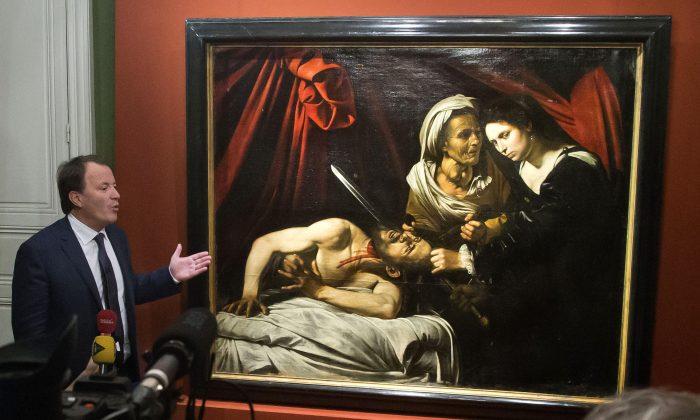PARIS—A 400-year-old picture that might have been painted by Italian master Caravaggio has been found in an attic in southern France.
Eric Turquin, the French expert who retrieved the painting two years ago, said it is in an exceptional state of conservation and estimated its value at 120 million euros (about $135 million), even though he acknowledged experts disagree about its authenticity.
Called “Judith Beheading Holofernes,” it depicts the biblical heroine Judith beheading an Assyrian general. It is thought to have been painted in Rome around 1604-05.
Turquin told a news conference on Tuesday that there “will never be a consensus” about the artist.
Two Caravaggio experts he consulted with attributed the painting to Louis Finson, a Flemish painter and art dealer who was familiar with Caravaggio, Turquin said. Finson possessed a number of works from the Italian master and made copies of his pictures.

“But the third expert I met told me that it was not only a Caravaggio, but also a masterpiece,” Turquin said. “'Judith Beheading Holofernes’ must be considered the most important painting, by far, to have emerged in the last 20 years by one of the great masters.”
Bruno Arciprete, the Naples-based expert who restored Caravaggio’s “Flagellation of the Lord” and “Seven Works of Mercy,” said the painting could well be a Caravaggio but that further studies are needed.
“It has interesting characteristics that can be attributed to Caravaggio,” he said in a phone interview.
The owners of the house in Toulouse discovered the painting, which had been partially damaged by water, when they went to the attic to fix a leak.
Turquin kept the picture away from the public eye for two years, cleaning it and submitting it to a deep examination that included infra-red reflectography and X-rays. Because of the painting’s large size, some of the checks were made at a veterinary school.
“Everybody agrees on the fact that it’s one of the most important masterpieces from the 17th century to have emerged over the past 30 years,” said Turquin, who has been watching over the painting. Since its delivery in Paris, he has been sleeping with the painting in his bedroom, as a security measure.






